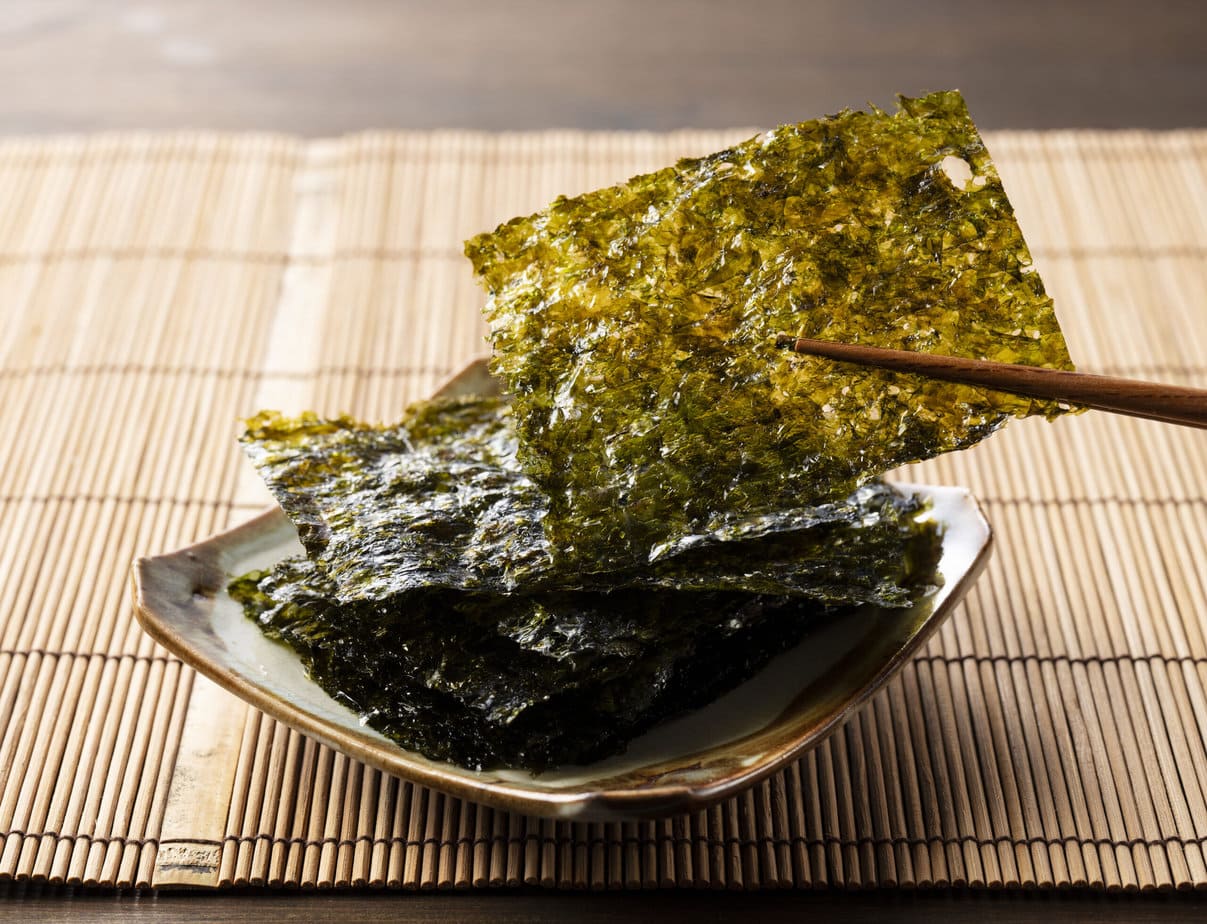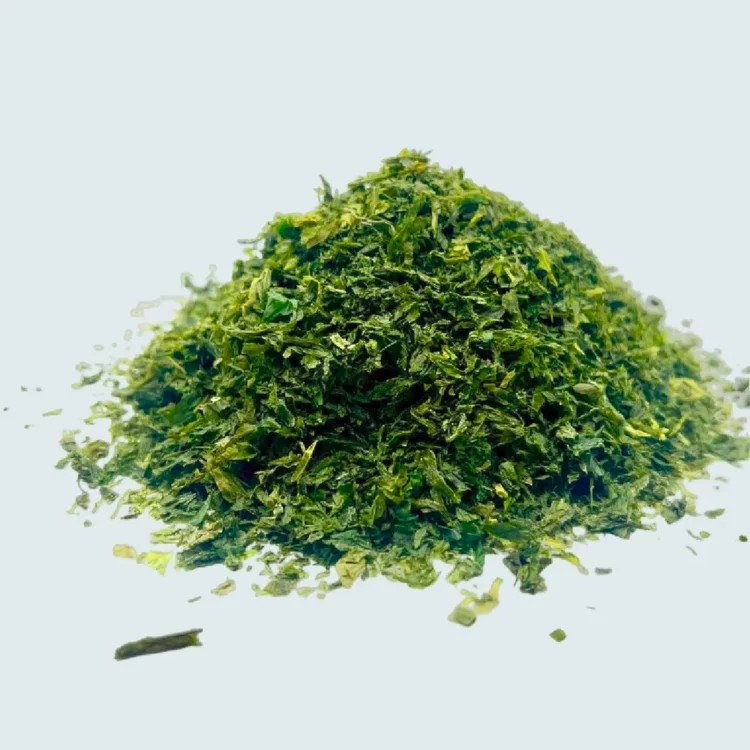If you’ve read the article about nori, this one should also catch your attention… Nori, aonori, there’s indeed a lot to question. Aonori is actually also an edible seaweed, the basics of Japanese cuisine. But then, what’s the difference between nori and aonori? And how can we use it?
What Is Aonori?
The word “aonori” is a Japanese term that generally refers to green algae, either as a species or as a condiment. It’s obviously the second definition that interests us. In Japan, it’s mainly consumed dried, in small flakes to be sprinkled directly onto dishes. It’s a green-colored garnish (like seaweed, you might say…) with a distinctive and unique aroma. You may have already seen it as a topping on okonomiyaki or natto.
Where Does Aonori Come From?
Aonori is a type of seaweed belonging to the Ulva variety. It can be found in several Japanese regions, such as in Ise Bay, where it’s cultivated for (inevitably) commercial purposes. The taste of these seaweeds can vary depending on the region.
What Does Aonori Taste Like?
Like most seaweeds (wakame seaweed or kombu for example), aonori has that salty ocean taste. What most people describe as such is actually an umami flavor. It’s fresh and iodine-rich, with a slightly crunchy texture in the mouth. If you want to bring a touch of freshness to your dish while keeping it subtle, aonori is a sure winning combination.
Nori and Aonori, What’s the Difference?
There are many varieties of seaweed; all tastes and colors. But the two varieties most commonly used in Japan are indeed nori and aonori. What differentiates them? First, their appearance. Nori is that small edible dark green or black wrapper that surrounds sushi, maki, or temaki! It’s originally a red algae, but the drying process gives it its almost black color. It’s usually sold in whole sheets.

On the other hand, aonori, in terms of appearance, has a more obviously green color to the naked eye. It comes from a species of green algae, unlike nori. Logical when you know that aonori is a generic term for green algae. Aonori is also more commonly sold in flake form. As you’ve probably guessed, it would be difficult to roll sushi with aonori!
Another notable difference: the taste. Both types of seaweed share the same salty and iodine taste. However, nori tends to have a lighter flavor than aonori, which has a more pronounced taste. It’s even said that the latter has a more robust, intense, earthier flavor. This makes it ideal for seasoning blends and garnishes. A bit less suitable for making rolls though.
What Are the Benefits of Aonori?
Like many other types of edible seaweed, aonori is a great source of nutrients and vitamins, particularly A, B12, and C. To give you an idea, it contains more calcium than milk and more iron than spinach. This seaweed is also rich in magnesium, lithium, fiber, and minerals. It’s an excellent health asset as it strengthens the body, boosts the immune system, and promotes the elimination of toxins.
How to Use Aonori in Cooking?
As you’ve understood, we won’t use aonori like nori, although it can pair well with the same kind of ingredients. Japanese people mostly consume it as a topping on traditional dishes like okonomiyaki, natto, yakisoba, takoyaki, or even furikake. It can also be used as a seasoning for soup bases, noodle dishes, stir-fries, rice bowls, ramen, omelets, fish… According to your taste!

What Can You Substitute for Aonori?
Aonori can simply be replaced with nori. The latter is often sold in sheets, but you can always chop it using a food processor. The taste is slightly different, but it remains one of the best substitutes.
Another alternative: there is another seaweed called “aosa”, which is also sold in flakes. This is why it can be confused with aonori seaweed. But there’s no need to worry, as the flavors are quite similar since they come from the same family of seaweeds.
Where to Find Aonori?
Aonori can be easily found in Asian grocery stores, usually in flake form. Many online sites also offer it.
How to Store Aonori?
Aonori should be stored in a cool place, away from any source of heat and moisture. After opening, place it in the refrigerator to preserve its flavor.

